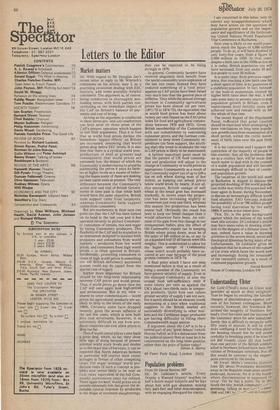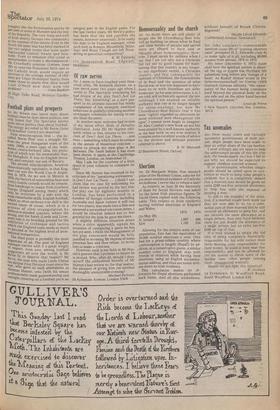Understanding Ulster
Sir: Lord O'Neill's notes on Ulster may bewilder as much as they enlighten. True he began by recalling the familiar charges of discrimination against certain of his former colleagues. More recently, however, the Notebook described the integrity of Northern Ireland's Civil Servants and the success of the Unionists' drive for new industries. Surely this is difficult to reconcile with fifty years of misrule. It will be even more confusing if next he writes about the housing record; but he will strain credulity to breaking point if he tries to tell Bill Grundy (June 22) that fewer than one percent of the British soldiers killed in Northern Ireland have been the victims of Protestant terrorists. For all this would be contrary to the impressions conveyed by the media.
Mr Ewart Milne's remarks (Letters June 22) about Protestants dwindling away in the Republic must seem utterly irrelevant, however, for it is the North where discrimination is supposed to occur. Yet he has a point, for in &If,' South the tiny Jewish communiteee,'
shrinking, falling in ' eween 1946 and 1961 hv in Leinster
" the two largest towns that were under % Mr Crawford's solution (Letters June ;
children per Ulster Protestant family from Nationalist control, Newry and Strabane. Even to mention this trend is North the same bias has been marked in sectarianism, to resist it discrimination. at the expense of the others. Even in the , of Irish society favours one community
'29)to raise the Protestant birth rate to the Catholic levelwould require an increase in the average number of j_ord O'Neill now deal with the problem? ,under three to nearly five. How would per cent or more in Munster and the rest (roughly like the Protestants) and by 50 of the Republic. The very warp and weft
• Cohn Baskett ,30 High Oaks Road, Welwyn Garden City.



































 Previous page
Previous page